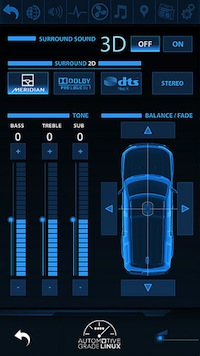 The Automotive Grade Linux (AGL) project is one of many independently funded software projects hosted by the Linux Foundation. For these Collaborative Projects, as they’re called, the Linux Foundation provides the essential framework so that participants can focus on innovation and results.
The Automotive Grade Linux (AGL) project is one of many independently funded software projects hosted by the Linux Foundation. For these Collaborative Projects, as they’re called, the Linux Foundation provides the essential framework so that participants can focus on innovation and results.
To learn more, we are talking with key contributors about what they do and how they became involved. For this feature, we spoke with Michael Fabry, Project Manager Engineering at Microchip, about his work with the AGL, which is dedicated to creating open source software solutions for automotive applications and which recently added automakers Subaru, Mitsubishi Motors, Mazda, and Ford to its list of members.
Earlier this month, the AGL introduced the Unified Code Base (UCB) distribution built specifically for the automotive industry, which was built from the ground up “to address automotive specific applications and leverages the best software components from AGL and other existing open source projects such as Tizen and GENIVI Alliance.” The distro was demonstrated at CES and provides a complete open source development infrastructure including Git code repositories, Gerrit code review, and Jira bug tracking.
Michael explains, “The Automotive Grade Linux project started to detect shortcomings of Linux for use in automotive environment and to fix them upstream. From the first reference implementations and demonstrations, the interest grew to build an entire reference distribution. This distribution will be available for multiple embedded platforms popular by the automotive industry. Everybody in the industry — OEMs, Tier1s, and students — are currently excited about the Linux car idea. By having a common distribution in place, one can jumpstart the development, get results quickly and contribute to improving it further.”
A Perfect Match
Microchip became involved with AGL in 2014 when, according to Michael, they became aware of the project through a news article. “At this time, we worked on our MOST Linux Driver project, an open source kernel driver supporting Microchip’s range of MOST Intelligent Network ICs. So, there was this open source automotive project, and we had our automotive network driver almost ready… perfect match, quite obvious that we wanted to participate!”
 When Microchip became a member of AGL and joined the Linux Foundation, they were connected with kernel maintainer Greg Kroah-Hartman through the LF Technical Advisory Board (TAB) mentoring program. A previous Linux.com article described how this mentoring process helped Microchip’s code gain quick acceptance into the kernel mainline: “Kroah-Hartman helped the Microchip team navigate divergent opinions and comments, enabling them to refine their code with confidence.” Michael put it another way, “When you have Greg Kroah-Hartman cc’ed on your kernel submission, people pay attention.”
When Microchip became a member of AGL and joined the Linux Foundation, they were connected with kernel maintainer Greg Kroah-Hartman through the LF Technical Advisory Board (TAB) mentoring program. A previous Linux.com article described how this mentoring process helped Microchip’s code gain quick acceptance into the kernel mainline: “Kroah-Hartman helped the Microchip team navigate divergent opinions and comments, enabling them to refine their code with confidence.” Michael put it another way, “When you have Greg Kroah-Hartman cc’ed on your kernel submission, people pay attention.”
For the AGL project, Michael took the role of being the system architect of the AGL Automotive Subsystem, which includes connectivity to automotive networks like CAN, LIN, and MOST. He says, “For my company, I am in charge of coordinating our team’s Linux development activities — like the MOST Linux Driver.”
In this role, he sees some of the challenges facing the project. “From customers, I see a lot of interest in automotive Linux applications; however, there is no consensus yet which route to take. Several solutions and cloud-based service companies compete to sell-in their system.” AGL, however, makes the point to be fully open source.
With a background of several years of expertise with cryptography solutions for networking projects, Michael observes: “In the long-term, the biggest challenge they will be facing is security — not only in terms of preventing hackers from hijacking the car’s system, but also preventing the theft of collected personal data.”
For Michael, the most rewarding aspect of being involved in this project is “working together with other companies on the innovative edge and serving our customers best with visions and solutions for their next-gen car systems.” To those who are interested in participating, he advises, “Don’t wait — collaborate and bring in your topic and ideas.” Such collaboration, he hopes, will allow the project to successfully continue to define the reference for an open, secure, and non-profit Linux car system.


